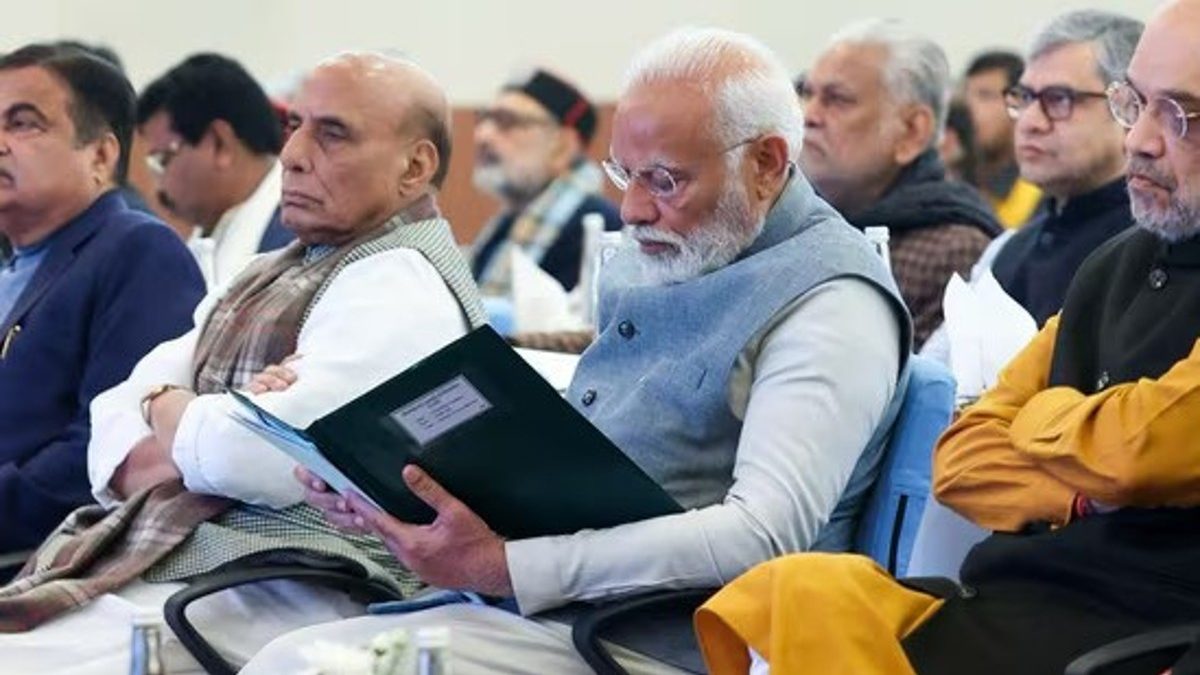The battle for the general elections 2024 in India has started well before the formal announcement of the poll schedule by the Election Commission. With the Narendra Modi-led BJP releasing its first list of candidates, the race to control the Lok Sabha is off to an early start for the ruling dispensation while the Opposition continues to flounder from blunder to blunder.
The deft manner in which key regional alliances have been struck by the BJP even as the Congress witnesses an exodus of leaders points to the stark divergence in confidence levels between the two political formations. By now it ought to be clear that the I.N.D.I. alliance is a non-starter in most states with the failure to coordinate seat sharing. Barring the deep south, the opposition alliance is not much of a factor in most states. A key leading indicator of the direction in which the political winds are blowing is the steady flow of talent towards the BJP. If the first list of candidates released by the BJP is anything to go by, a generational shift is underway with several veterans bowing out of the electoral race.
The minutiae of electoral arithmetic notwithstanding, the battle for 2024 is in many ways a battle over the next decades to realise a developed India by 2047. Recording a stunning 8.4% GDP growth during the third quarter of 2023-24, the economic tailwinds and geo-political undercurrents seem to be working in concert to propel the country towards the goal. Recognising the significance of the moment, PM Modi’s government has bet big on sunrise technology sectors that will fuel the Indian economy in the decades to come.
In the last few weeks a slew of decisions by the government underscore the central role technology has come to occupy in Modi’s vision for a Viksit Bharat by 2047. From announcing to the nation, the final shortlist of astronauts for India’s first manned space mission Gaganyaan to approving the first semiconductor fab to come up in the country, Modi’s techno-nationalism is emerging as the crucial mantra in this race to 2047 with 2024 as an important stopover. Semiconductor investments spanning from the east in Assam to the west in Gujarat, underscore how Modi’s thrust on a technology-driven economy has become a political priority. With the decision to completely liberalise the space sector opening up to a hundred percent in foreign direct investment (FDI), sunrise sectors are poised to play a crucial role in sustaining and further accelerating the economic momentum.
Casting a wide social safety net has been a hallmark of Modi’s techno-nationalism over the past decade. The results from this laser focus on keeping the socio-economic fabric intact is most visible in the declining levels of extreme poverty across India. For the first time the World Poverty Clock, a monitoring tool of the World Data Lab based in Vienna, has estimated extreme poverty in India to be below three percent. Writing for the Brookings Institute, an American think tank, noted economist Surjit Bhalla alongside Karan Bhasin, observed that extreme poverty stands eliminated in India as commonly defined in international benchmarks. This important socio-economic milestone on the road to a developed India by 2047 comes on the eve of general elections with a confident PM Modi making his case to the voters for what he believes to be an imminent third term. It also comes at a time when the aspirational middle class in India is experiencing accelerating growth as witnessed in the rising levels of automotive ownership, mobile phone penetration and exponential growth in digital payments.
Impact Shorts
More ShortsIn stark contrast to the decadal growth vision of the Modi led-BJP rooted in techno-nationalism, the narrative from the opposition continues to be regressive and lacking in a vision. Far from laying out a roadmap for a developed India, the political opposition’s messaging has been a mish-mash of unsustainable entitlement programs bordering on fiscal irresponsibility and scorched earth politics of caste that is seeking to inflame social faultlines. The sullen petulance of the political opposition was most visible in its boycott of the pran pratishtha ceremony of the Ram Mandir in Ayodhya on specious grounds, having completely misread the mood of the nation.
Despite favourable tailwinds and a visibly rudderless political opposition it is to the credit of the Prime Minister that he has neither taken the electorate for granted, nor left room for overconfidence to creep in within his party. Borrowing a leaf from best practices in business management of setting wildly impossible goals, Prime Ministers’ Modi exhortation of a stretch target of 370+ seats for the BJP in the Lok Sabha, not only challenges the rank and file with a clear and unambiguous goal but it also forces his electoral machinery to think out of the box in breaking new ground in states that have remained beyond the BJP’s grasp. Underlying the push to engage first time voters is the realpolitik of this not only being one of the largest cohorts of first-time voters but also a group that practically has no memory of the lost decade during the UPA era.
By locating the central narrative for the battle of 2024 within the decadal vision for a Viksit Bharat by 2047, Prime Minister Modi has made the election as much about the future of India’s first-time voters as about “India being the Future” in a world divided by geo-political conflicts and rocked by economic uncertainty.
The writer is the former CEO, Prasar Bharti. Views expressed are personal. The views expressed in the above piece are personal and solely those of the author. They do not necessarily reflect Firstpost_’s views._
)